Asus ROG Gladius Review
Manufacturer: ASUSUK price (as reviewed): £64.99 (inc VAT)
US price (as reviewed): Currently unavailable
Asus has a few gaming mice in its product catalogue, but it's not a big focus for the company, and this is the first one we've seen from them. The ROG Gladius targets right-handed players and comes with six buttons particularly suitable for FPS players. It also claims to have an ergonomic design that's a good fit for palm, claw and fingertip users.
The Gladius has a steel-grey finish on its plastic body, and it's smooth rather than soft touch like on the Roccat Kone XTD and Mionix Naos 8200. Supposedly, this helps the mouse stay cool to lower sweat and stickiness, but as we've never suffered from this issue it's hard to say how effective it is, but what we can say is that the surface is still pleasant to hold. The main body is complemented by Mayan patterned rubber side grips. All in all, the mouse is very well built, as you'd expect from a ROG product; it's about as solid you could expect it to be without using metal or carbon fibre.
The shape of the mouse is indeed well-crafted, and you shouldn't have difficulty finding a comfortable fit regardless of your grip type. As palm users, our thumb, middle and index fingers found their natural home immediately, with the grooves in the buttons and the curves around the back matching our hand shape very well. There's no ring or pinky support, but they fall easily into position on the right side, and the patterned rubber is both comfortable and high on the grip scale. We still prefer the even fuller bodies of the Kone XTD and the Naos 8200 (and the soft touch finish), but many will like the slightly smaller profile of the Gladius, though it's still a relatively large rodent. Claw and fingertip users are also well catered for, and the rubber sides really come into play here in helping you keep control. That said, the Gladius weighs in at 116g with no weight (or size) adjustments available, so many such users may find it to be too heavy.
The Gladius has a Micro-USB connection at centre front, as it uses a detachable USB cable for greater reliability. Asus supplies two cables, one 2m braided one with its own Velcro cable tidy, and a shorter 1m rubber coated one; we experienced no drag using either one. The cables lock securely in place so they won't come out if they get snagged on something – you'll need to flip the mouse over and release the locking mechanism to remove them. A ROG travel pouch is also supplied, so it's easy to pack everything up and go.
The left and right buttons are mounted atop Omron switches (rated for 20 million clicks) physically separate to the main body, supposedly for better responsiveness. Comparing them side by side with the Kone XTD that we had on hand and also uses Omron switches, we did find the Gladius buttons to be a little lighter (not too light), though our Roccat mouse has been thoroughly worn in by now, and the difference is very small. What is cool, however, is the Gladius's unique, modular Omron switch socket that allows users to upgrade or replace their switches to customise resistance. The sockets are compatible with Omron D2F and D2FC models (a full list can be seen here), and the Gladius features reusable cushions to account for varying switch heights. To replace one, simply peel back the feet, unscrew the four screws beneath, lift off the body and swap the switch out. A second pair of Omron switches is supplied with the Gladius, as is a replacement set of feet, so it's a pretty full package.
The two thumb buttons are very well positioned for quick access and are described as 'slide-to-press'. We'd probably describe them as 'roll-to-press' ourselves, but either way it essentially means that you can roll your thumb across them or push up on them to actuate them. They're very well balanced such that we never accidentally pressed one, but it was very easy and quick to do so when we wanted to. There's also of course the scroll wheel, which is rubber coated, secure in its socket and comes with well defined steps thanks to the use of an ALPS encoder. Each step translates to a scroll command, and there's no accidental triggering of this mid-step as there can be with cheaper models. The final button is the DPI shift one, used to switch between two programmable DPI levels. It could do with being a bit further forward – our finger naturally landed further ahead of it at first, but it's still relatively easy to trigger.
The heart of this particular rodent is a 6,400 DPI optical sensor, the fastest of its type currently available that sports tracking of up to 200 inches per second and up to 50g acceleration. Optical sensors are often favoured by gamers for their smoother feel, as they are less prone to picking up surface imperfections. However, this also means that they typically require a good surface to work with. Also, though some laser sensors have even greater sensitivity than this, Asus says it is enough to track across a 4K UHD screen (3,840 x 2,160) with less than an inch of movement. Lift off distance is less than 1.5mm, and the mouse is also the first we've seen to support a 2kHz USB polling rate, though in practice it's unlikely to be distinguishable from 1kHz counterparts.

MSI MPG Velox 100R Chassis Review
October 14 2021 | 15:04


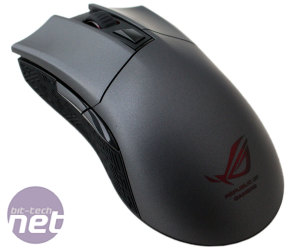
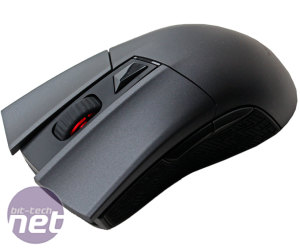
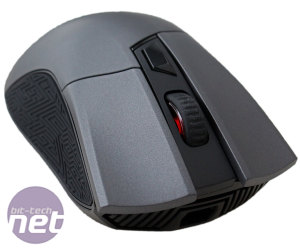
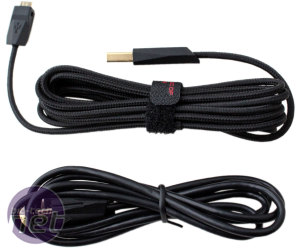

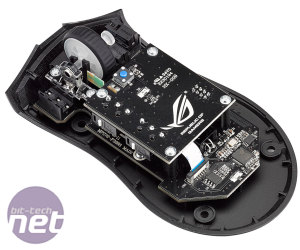
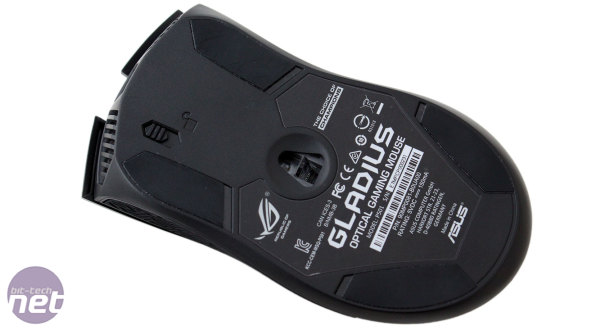







Want to comment? Please log in.